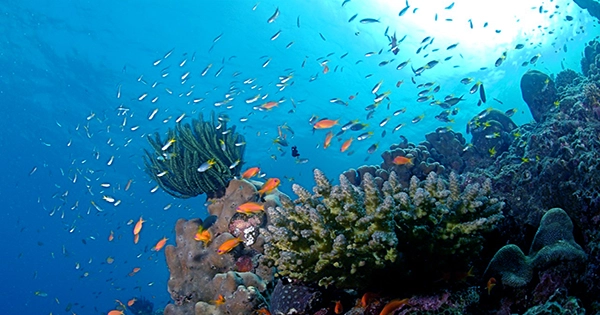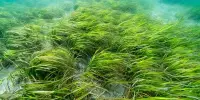Two pristine coral reefs were discovered deep underwater off the Galápagos Islands by Schmidt Ocean Institute scientists driving the SuBastian remote-operated vehicle (ROV). The finding was made during an expedition to explore underwater cliff ecosystems, and it resulted in the discovery of two new coral reefs as well as three previously unknown sea mounts.
The biggest of the two coral reefs, 800 meters (0.5 miles) long, is roughly the size of eight football fields, while the smaller is only 250 meters (0.2 miles). They’ve been around for thousands of years and are home to a very robust ecology made up of a diverse range of stony coral species that live between 370 and 420 meters (0.22 and 0.2 miles) below the surface.
“We are thrilled that our mapping data are able to improve our understanding of reef ecosystems in the Galápagos,” stated expedition leader Dr Katleen Robert of Memorial University of Newfoundland and Labrador in an email to IFLScience.
“The interdisciplinary science team is excited that the data collected during this expedition will contribute to growing knowledge on the Galápagos National Marine Reserve and contribute to the management of the Eastern Tropical Pacific Marine Corridor.”
The discovery of these reefs within the biologically significant Galápagos Marine Reserve is expected to assist scientists in better understanding the role that deep-sea habitats play in preserving ocean health. Something difficult to assess when we don’t know what’s under there.
In addition to exploring deep-sea ecosystems, the expedition used laser scanning equipment to build high-resolution maps of the area. And by high resolution, they aren’t joking. The photos were accurate to 2 millimeters (0.08 inches), allowing scientists to identify organisms dwelling on the seafloor, which was previously impossible with lower-quality mapping technology.
This high-resolution mapping technology was tested on two unknown seamounts discovered during the voyage, resulting in the first photos of them being extraordinarily detailed. Based on satellite data, scientists had a sneaky hunch there might be seamounts here, but they have just recently confirmed their existence.
“This information is not only valuable from a scientific perspective, but it also provides a solid foundation for decision-making that effectively protects these ecosystems, safeguarding the biological diversity they harbor and ensuring their resilience in a constantly changing environment,” said Danny Rueda Córdova, director of the Galápagos National Park Directorate.
“The geological dynamics of the region are critical to deep-sea ecosystems.” Research and mapping are critical instruments for ensuring that the Galápagos Islands remain an iconic example of nature’s beauty and value.”
















